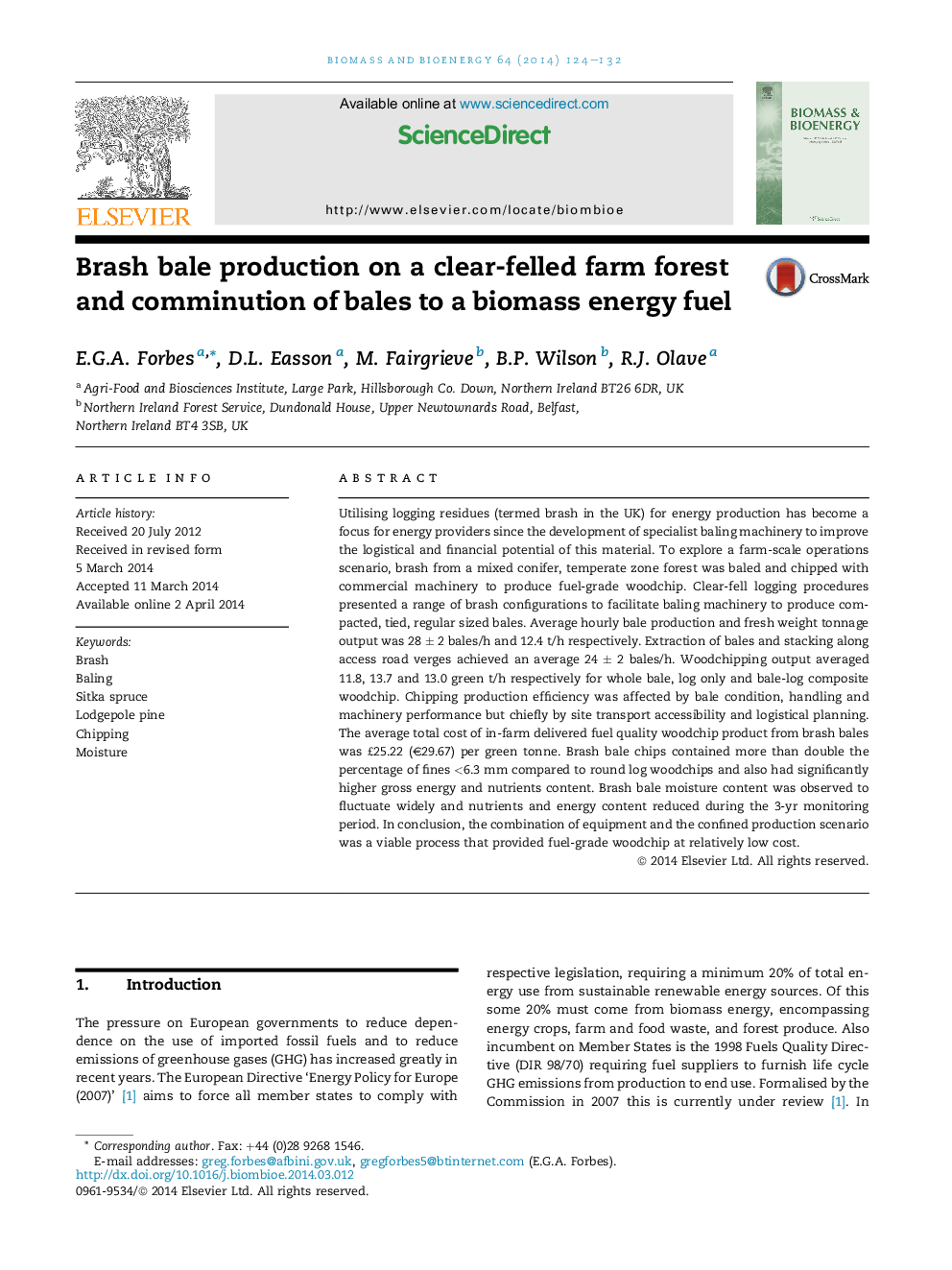| کد مقاله | کد نشریه | سال انتشار | مقاله انگلیسی | نسخه تمام متن |
|---|---|---|---|---|
| 676880 | 1459829 | 2014 | 9 صفحه PDF | دانلود رایگان |
• Forest brash was baled and chipped with commercial machinery for use in an on-farm energy centre.
• Mean chip output of 12.3, 14.3 and 13.0 green t/h respectively for whole bale, log and bale + log.
• Brash contained more than double the percentage of fines <6.3 mm compared to round log.
• Brash had significantly higher energy and nutrients content that reduced over 3years.
• Use of this equipment in the on-farm situation was a viable process.
Utilising logging residues (termed brash in the UK) for energy production has become a focus for energy providers since the development of specialist baling machinery to improve the logistical and financial potential of this material. To explore a farm-scale operations scenario, brash from a mixed conifer, temperate zone forest was baled and chipped with commercial machinery to produce fuel-grade woodchip. Clear-fell logging procedures presented a range of brash configurations to facilitate baling machinery to produce compacted, tied, regular sized bales. Average hourly bale production and fresh weight tonnage output was 28 ± 2 bales/h and 12.4 t/h respectively. Extraction of bales and stacking along access road verges achieved an average 24 ± 2 bales/h. Woodchipping output averaged 11.8, 13.7 and 13.0 green t/h respectively for whole bale, log only and bale-log composite woodchip. Chipping production efficiency was affected by bale condition, handling and machinery performance but chiefly by site transport accessibility and logistical planning. The average total cost of in-farm delivered fuel quality woodchip product from brash bales was £25.22 (€29.67) per green tonne. Brash bale chips contained more than double the percentage of fines <6.3 mm compared to round log woodchips and also had significantly higher gross energy and nutrients content. Brash bale moisture content was observed to fluctuate widely and nutrients and energy content reduced during the 3-yr monitoring period. In conclusion, the combination of equipment and the confined production scenario was a viable process that provided fuel-grade woodchip at relatively low cost.
Journal: Biomass and Bioenergy - Volume 64, May 2014, Pages 124–132
